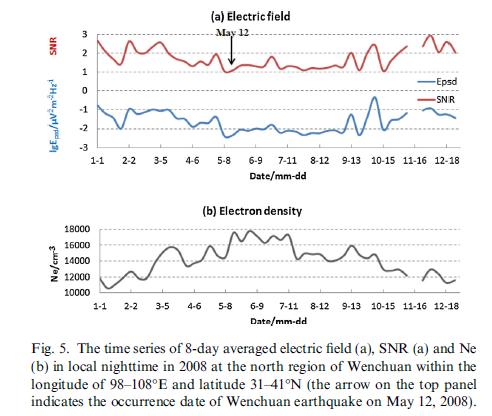The artificial low frequency (LF) signals recorded at topside ionosphere from DEMETER satellite were analyzed in this paper, and the typical diurnal and seasonal variations were illustrated around 162 kHz in electric field spectra. The larger power spectrum density (PSD) values in electric field at local nighttime and in winter season all demonstrate the correlation feature of lower plasma content to higher penetration of LF waves into ionosphere. Around Wenchuan earthquake, the comparison of signal-noise-ratio (SNR) values in electric field with each half month during January to May in 2008 and the same half month in May from 2005 to 2007 revealed their lowest values and small covering area around the preparation region of Wenchuan earthquake in 2008,while the electron density (Ne) was also with lower values (Figure 1), which was inconsistent with the background negative feature in Ne and LF signals at satellite altitude. Combined with other researches in VLF radio waves and geochemical observations from satellite, the interaction of ion accumulation and upward movement from gaswater release at surface might be a key factor to disturb the ionospheric plasma density, and then possibly leading to the decrease of low energy penetration of LF radio waves from the artificial transmitted source at ground.

Figure 1 The time series of 8-day averaged electric field (a), SNR(b) and Ne (c) in local nighttime in 2008 at the north region of Wenchuan within the longitude of 98-108ºE and latitude 31-41ºN (the arrow on the top panel indicates the occurrence date of Wenchuan earthquake on May 12, 2008)
Published in <Advances in Space Research>, 63(2019), 3536-3544




